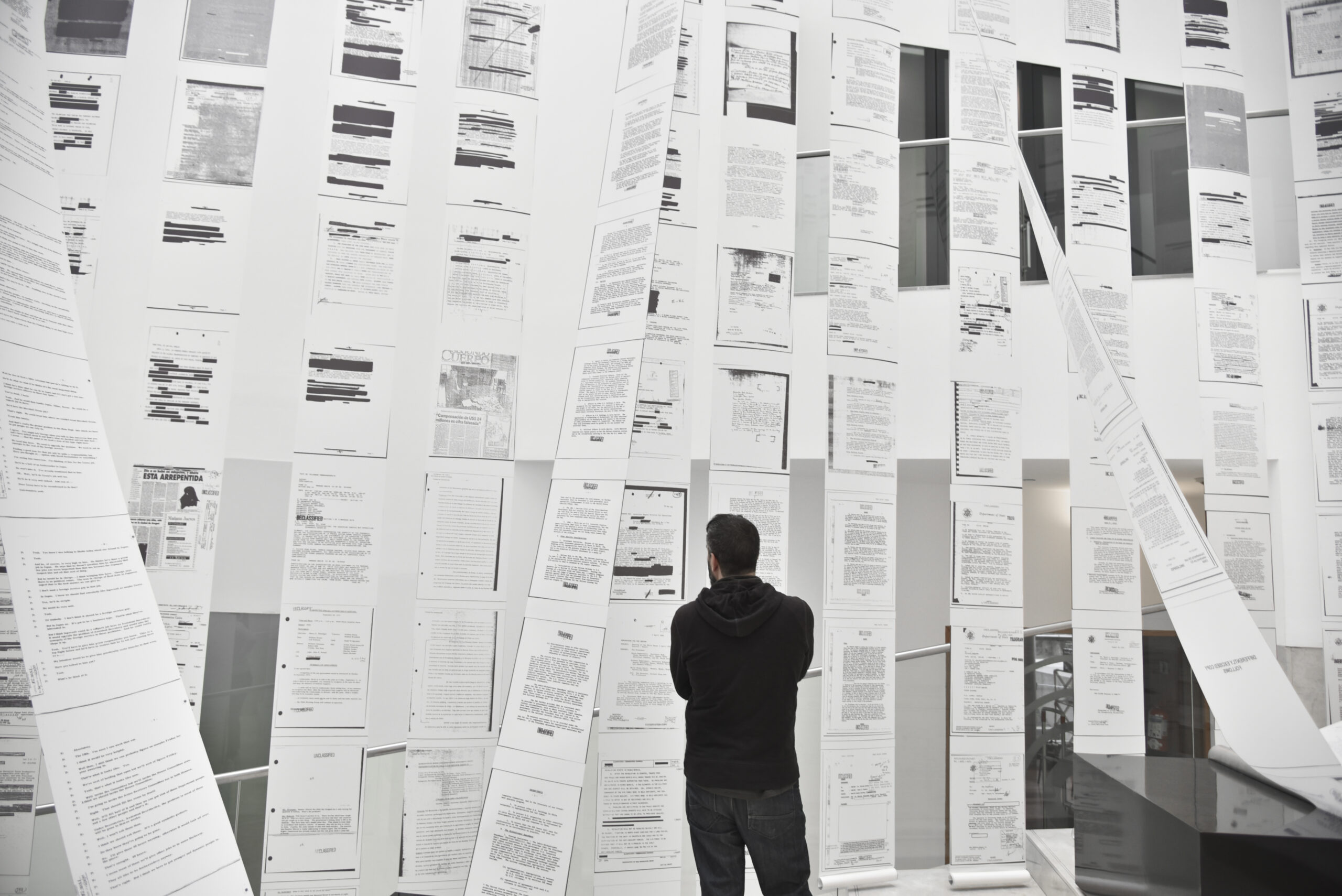Necroarchivos de las Américas: an unrelenting search for justice
June 15, 2024 to December 08, 2024
This exhibition examines artistic responses to violence instigated by state regimes across the Americas to disclose censored narratives, argue for the importance of artmaking as an act of memory and witnessing, advocate research, and seek justice.
Through the lens of contemporary art, Necroarchivos, “the archival study of the spaces between life and death and their interconnections” investigates diverse responses to the “disappeared” from the Americas. From the 1960s to the ‘90s in Mexico, Colombia, Chile, Guatemala, Bolivia, Brazil, Argentina, El Salvador, Uruguay, and Nicaragua, intellectuals, artists, and activists were kidnapped, tortured, exiled, and in numerous instances murdered, for demanding human rights and opposing dictatorial regimes and censorship. More recently, from the late ‘90s to today, people in the region have been victims of ongoing failed policies such as the War on Drugs, narco-violence, the continued presence of dictators, feminicide, and a brutal state and border apparatus.
Conceptualized as “Necroarchivos” by Dr. Adriana Miramontes Olivas, these artworks examine, archive, and denounce these issues and the continued disappearance of women and other individuals while addressing both art historical concerns and trends to challenge the definition of art and its impact upon society.
Artists
Luis Camnitzer (b. 1937, German-born Uruguayan),
Oscar Muñoz (b. 1951, Colombia),
Felicia Rice (b. 1954 United States),
Guillermo Gómez-Peña (b. 1955 México);
Doris Salcedo (b.1958, Colombia),
Teresa Margolles (b. 1963, México),
Alfredo Manzo Cedeño (b. 1964 Cuba);
Rafael Lozano-Hemmer (b. 1967, Mexican-Canadian),
Valaria Tatera (b. 1967, United States),
Voluspa Jarpa (b. 1971, Chile),
Verónica Dondero (n.d. Chile);
Gustavo Vázquez (b. 1973 Puerto Rico);
Zachary Watkins (n.d United States);
Regina José Galindo (b. 1974, Guatemala);
Rigoberto Julián Díaz (b. 1992 México);
Carlos Castro Arias (n.d. Colombia)
These artists highlight voices and stories from a variety of communities. They participate in a transnational and intergenerational exchange to address “los desaparecidos” and other kinds of violence in the region including CIA-backed regimes, neo-imperialism, colonization, and ongoing authoritarian rule. Necroarchivos foregrounds their creative efforts and recognize their commitment to reveal and condemn violence in their demands for social change.
Special Project
“Plegaria Muda” (2008-10) by Doris Salcedo is a contemplative installation consisting of pairs of tables that symbolize burials. The tables incorporate mud, seeds, and grass, speaking not only of death but also of life, or life after death. Our second largest gallery in the museum will be devoted for this special project.
Necroarchivos de las Americas is curated by Dr. Adriana Miramontes Olivas
See full article here
